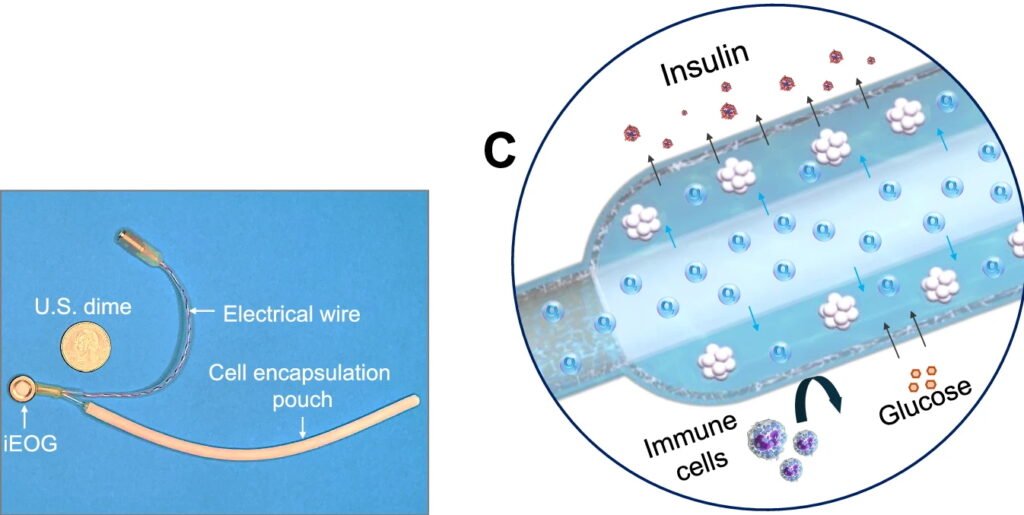Cornell University researchers have developed a new implant system that could revolutionize treatment for people with type 1 diabetes. The device keeps transplanted insulin-producing cells alive by supplying them with oxygen—solving a major problem in cell therapy, where dense clusters of cells often die due to lack of oxygen after implantation. This innovation could eliminate the need for daily insulin injections and avoid the risks of immunosuppressive drugs.
The implant consists of a ring-shaped capsule filled with insulin-secreting cells and a tiny electrochemical oxygen generator at its core. The generator splits water molecules from surrounding tissue to produce oxygen, which is delivered directly to the cells through a permeable membrane. A nanofibrous outer layer protects the cells from the immune system, allowing them to function without triggering rejection.
In tests with diabetic rats, the oxygenated implants restored normal blood sugar levels within three days and maintained healthy glucose control for nearly three months. Without oxygen support, the cells failed quickly. The system also worked with human pancreatic islets in lab experiments, showing strong potential for future clinical use.
The researchers plan to test the device in pigs and eventually in humans. They envision a future where similar implants could be used to treat other chronic conditions by delivering missing molecules—such as endorphins for pain or enzymes for metabolic disorders. The device could be wirelessly powered and designed for long-term use, offering a new path toward functional cures for diseases that currently require lifelong management.
Article from Cornell University: Implant treats Type 1 diabetes by oxygenating insulin-producing cells
Abstract in Nature Communications: A continuously oxygenated macroencapsulation system enables high-density packing and delivery of insulin-secreting cells

